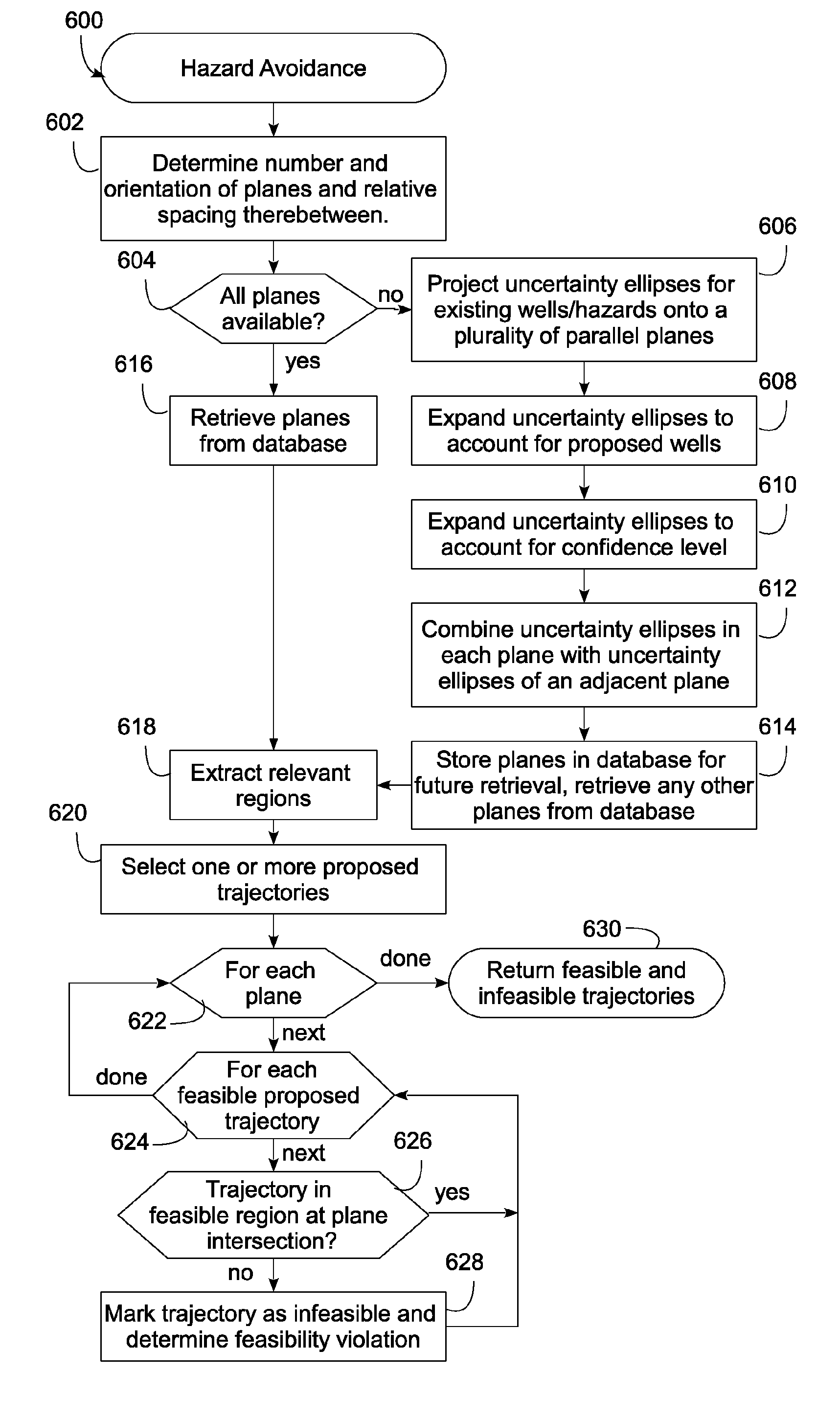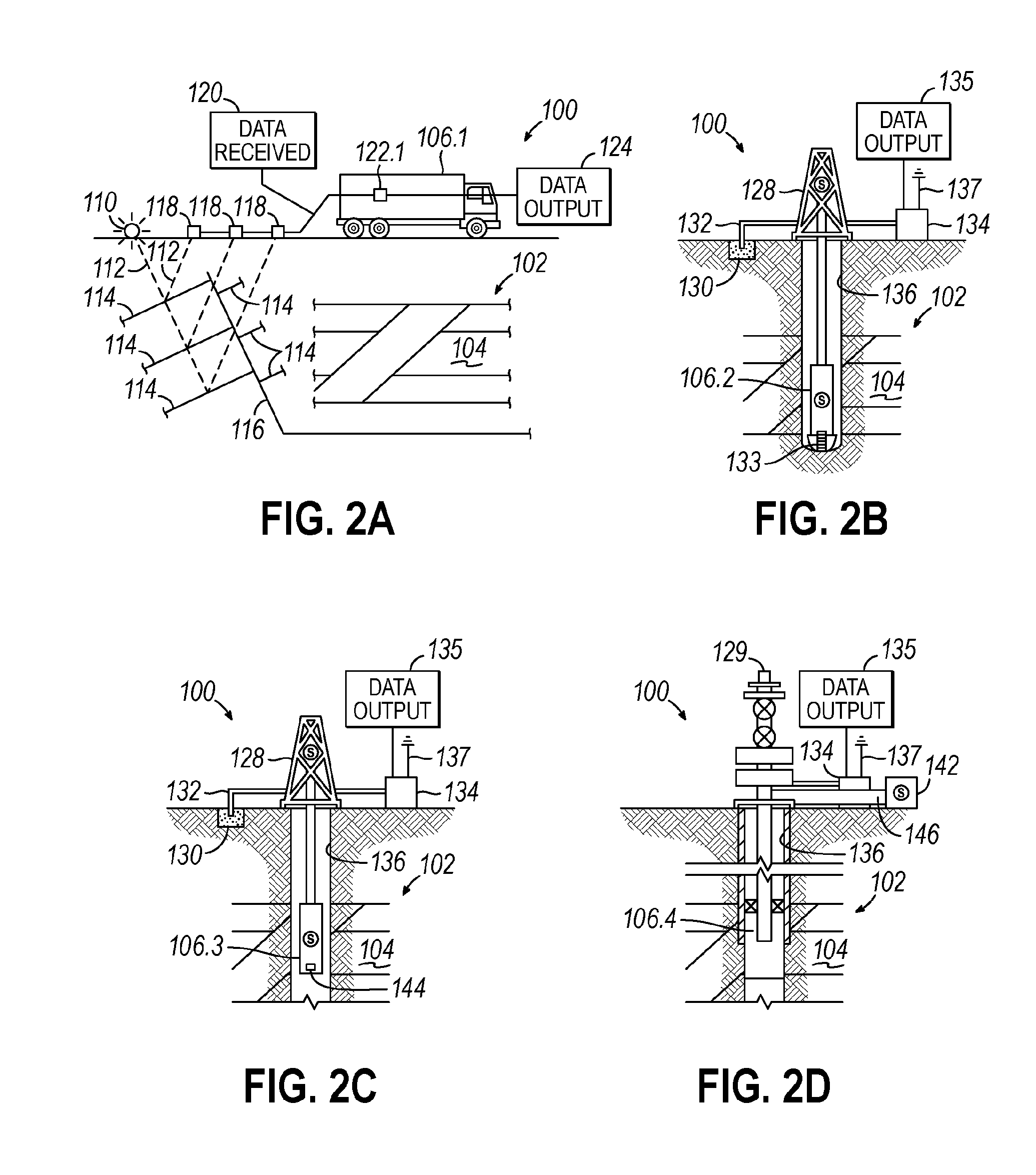Hazard avoidance analysis
a technology of avoidance analysis and avoidance, applied in the field of avoidance analysis, can solve the problems of complex hazard landscape, complicated determination of suitable placement and trajectory of a new well, and complicated determination of a suitable placement and trajectory for a new well
- Summary
- Abstract
- Description
- Claims
- Application Information
AI Technical Summary
Benefits of technology
Problems solved by technology
Method used
Image
Examples
Embodiment Construction
[0049]The herein-described embodiments provide a method, apparatus and program product that utilize infeasible regions projected onto sets of substantially parallel feasibility planes extending through a subsurface region to perform anti-collision and other types of hazard avoidance analysis against hazards disposed within the subsurface region.
[0050]A hazard, in this regard, may include an existing well trajectory, as well as other volumes within a subsurface region that are desirably avoided from a hazard avoidance analysis perspective, e.g., natural formations such as salt structures or fracture networks. A subsurface region may include, for example, the subsurface of an offshore and / or land-based oilfield or other geographical region, and generally including a reservoir with recoverable products such as oil, gas, etc.
[0051]Feasibility planes, as used herein, are substantially planar surfaces that are oriented substantially parallel to one another and spaced apart from one anothe...
PUM
 Login to View More
Login to View More Abstract
Description
Claims
Application Information
 Login to View More
Login to View More - R&D
- Intellectual Property
- Life Sciences
- Materials
- Tech Scout
- Unparalleled Data Quality
- Higher Quality Content
- 60% Fewer Hallucinations
Browse by: Latest US Patents, China's latest patents, Technical Efficacy Thesaurus, Application Domain, Technology Topic, Popular Technical Reports.
© 2025 PatSnap. All rights reserved.Legal|Privacy policy|Modern Slavery Act Transparency Statement|Sitemap|About US| Contact US: help@patsnap.com



